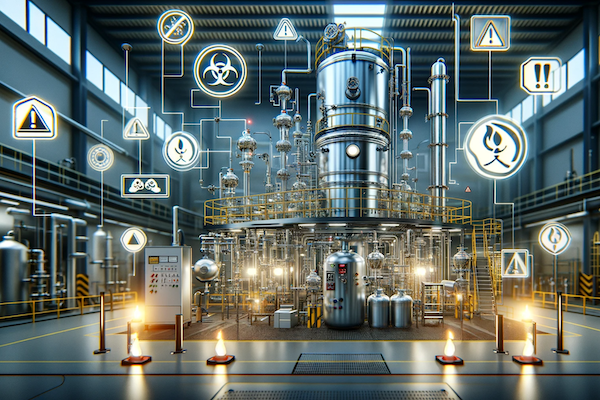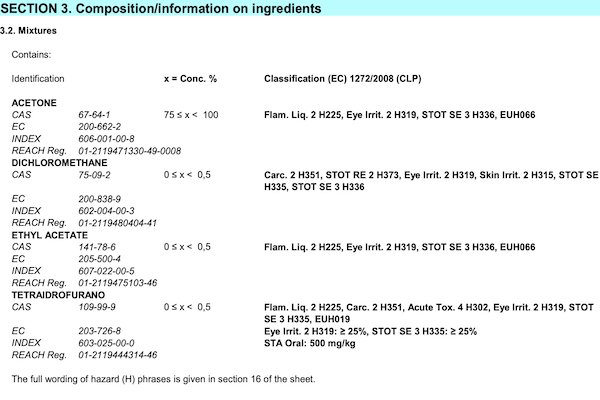Are you spending too much time and resources managing the distillatory?

Are the management operations of the distiller taking up the operator’s time and preventing them from focusing on more profitable tasks?
Is it possible to optimize these phases and eliminate downtime?
If you find yourself in this situation, you’ve come to the right place.
Many professionals looking to improve their distillation process turn to us to address these issues.
As you are aware, the distillation cycle consists of three fundamental phases:
- Loading: The process begins with loading the dirty solvent into the boiling chamber to proceed with heating.
- Discharge of the distillate: The generated vapors are directed into the condenser for condensation, and the distillate is discharged into a tank.
- Discharge of residue: At the end of the cycle, only the sludge remains in the boiling chamber, which is discharged into a designated container.
Depending on the type of distiller used, these phases can be carried out manually or automatically.
If you want to optimize your distiller’s operations and free your operator from repetitive and unproductive tasks, we can assist you.
We offer advanced solutions that allow for complete automation of the solvent distillation process, eliminating downtime and optimizing overall efficiency.
The level of automation of the distillation unit can be described using the following framework:
- Manual loading: This method requires an operator to manually fill the boiling chamber using an external pump and then initiate the distillation process.
- Automatic loading: In this mode, the distiller itself handles the solvent loading without the need for an operator. Level controls in the tank, along with double safety measures, halt the pump action and initiate the heating process upon reaching the desired level.
- Discharge of distillate: Typically, this phase occurs autonomously, with the distillate flowing out of the condenser by gravity. The only exception is when a pneumatic vacuum is present. In this case, the operator must intervene at the end of the cycle to break the vacuum and discharge the distillate.
- Discharge of residue: In manual or semi-automatic versions, the operator manually opens the discharge valve. In some setups, this also involves tilting the tank and manually cleaning it. In an automatic distiller, the machine itself, after verifying specific parameters, opens the valve and discharges the residue. It also maintains the boiling chamber’s cleanliness through a rotor equipped with a scraper, eliminating the need for manual tank cleaning.
With an automatic solvent distiller, once all cycle phases are completed and sufficient dirty solvent remains, the distiller automatically initiates a new cycle. This allows your operator to focus on more profitable and rewarding tasks.
Using a continuous, automatic solvent distiller, each phase of the process is autonomously managed by the machine itself. The operator only intervenes when the residue tank is full and needs replacement after a certain number of cycles. Opting for a highly automated distiller enables you to streamline operations and reduce manual operator intervention, ensuring a more efficient and safe process.
You might wonder: Who controls the distiller?
Our distillation unit comes equipped with a sophisticated automation system and redundant controls. This enables autonomous and secure operation 24/7. Moreover, the operator can monitor the situation in real-time from anywhere using their smartphone, tablet, or computer. This functionality eliminates the need to leave their workstation to oversee the distiller.
The result is significant savings in terms of operator hours. Automation handles routine tasks, allowing the operator to focus on more strategic and profitable activities. Additionally, it’s worth noting that our distiller may qualify for tax benefits under Industry 4.0 regulations. You can deduct a portion of the investment cost through tax credits, yielding further economic advantages.
Don’t let distiller management steal your precious time and resources. Discover how our automated solution can enhance the efficiency of your solvent distillation process, ensuring constant control and increased productivity.
So why assign tasks to an operator that could be easily performed by an automatic regenerator, especially in a potentially hazardous and unhealthy environment?
The answer is clear: The market is increasingly moving towards automated solutions for medium to large-scale facilities. These solutions offer numerous benefits, including:
- Swift return on investment
- Significant reduction of the operator’s workload, freeing them from dangerous and unhealthy tasks.
In recent years, many facilities have adopted automation to optimize processes and enhance workplace safety. This trend leads to increased efficiency, risk reduction, and improved working conditions for personnel.
Entrusting solvent distiller management operations to an automatic regenerator allows you to fully leverage the advantages of automation, ensuring greater productivity and safety. The operator can focus on higher value-added activities while the solvent distillation unit handles complex management operations, minimizing exposure to risks.
Choosing an automatic system not only improves operational efficiency but also demonstrates a concrete commitment to safeguarding your employees’ health and safety. Discover how our automatic solvent distillation unit can transform your processing process, delivering superior results and a safer working environment.
Is it safe to leave a solvent distillation machine unattended?
Automatic regenerators have been specifically designed and built to operate continuously without the need for constant operator presence. Each phase of the cycle is controlled by a programmable logic controller (PLC) system that ensures redundant supervision of every operation. In the event a system doesn’t respond for any reason, a backup control is in place to take over.
It’s crucial that the distiller is certified and guaranteed by an accredited third-party entity. By doing so, the manufacturer obtains project and material approval. The entity putting their signature on the certification assumes responsibility, offering an additional layer of assurance.
In conclusion, thanks to the advanced technologies available today, optimizing the distillation process is achievable. Until a few years ago, viable alternatives didn’t exist, and operations were manually performed—a task that was not desirable. Now, it’s no longer necessary to dedicate a person full-time to monitor the distillation process. This results in significant savings in labor costs and a reduction in the risk of injuries from manual operations in unhealthy environments.
Seize the opportunities offered by technology to enhance the efficiency and safety of your distillation process.







